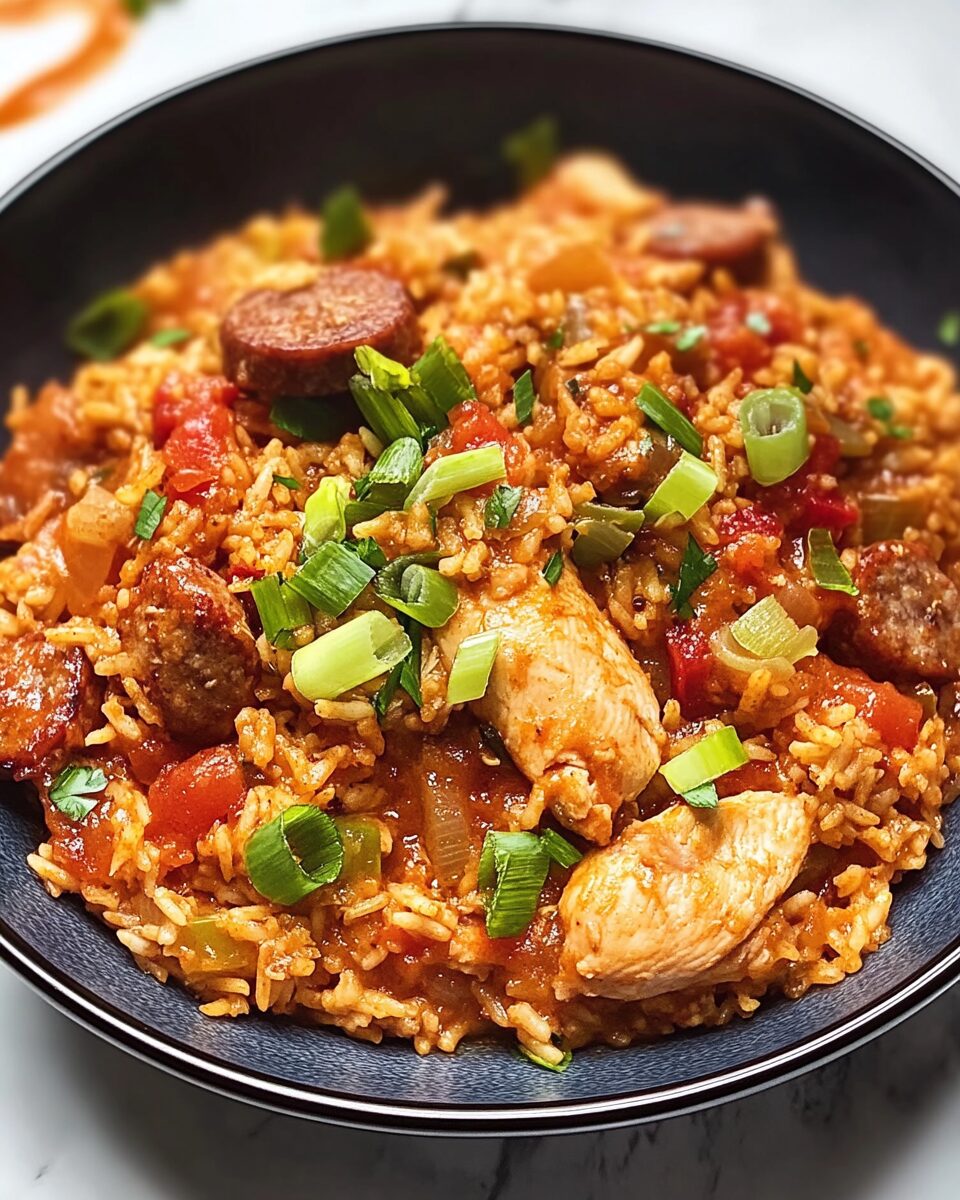The Origins of Jambalaya
Jambalaya’s history is a bit of a mystery, but its roots are deeply entrenched in the cultural diversity of Louisiana. Some culinary historians believe that the dish is a distant cousin of the Spanish paella, brought over by Spanish settlers in the 18th century. As they adapted to the ingredients available in Louisiana, they incorporated local products, including sausages and spices, which resulted in a distinctly different dish. Others believe that the African influence on Southern cuisine also played a role in shaping Jambalaya, as African slaves introduced rice dishes that later became a staple in Southern cooking.
Creole Jambalaya, also known as “red jambalaya,” is a variant that includes tomatoes, giving it a vibrant red color. This style is typical of New Orleans and reflects the city’s French, Spanish, and Caribbean influences. In contrast, Cajun Jambalaya, also called “brown jambalaya,” does not contain tomatoes and has a deeper, earthier flavor. This version is more common in the rural areas of Louisiana, particularly in the bayou regions.
Regardless of its exact origins, Jambalaya has become a cherished dish, representing the warmth, hospitality, and rich cultural history of Louisiana.
Why Chicken and Sausage?
The combination of chicken and sausage in Jambalaya is particularly popular because it offers a balance of flavors and textures. Chicken, especially dark meat like thighs, remains tender and juicy even after long cooking times. It absorbs the flavors of the spices and broth, becoming rich and succulent. Sausage, especially smoked varieties like andouille, adds a depth of flavor that complements the chicken. The smokiness of the sausage, combined with its spices, permeates the entire dish, giving it a distinctive taste.
The use of smoked sausage is essential to creating an authentic Jambalaya. Andouille sausage, a traditional ingredient, is heavily spiced with garlic, pepper, and other seasonings. This sausage adds a unique layer of complexity to the dish, as the smoke from the sausage melds with the other ingredients during cooking. While andouille is the traditional sausage used, many cooks substitute with kielbasa or another smoked sausage if andouille is not available, without compromising too much on flavor.
The Role of Cajun and Creole Spices
The defining feature of Chicken and Sausage Jambalaya is its seasoning. Cajun and Creole spices are central to the dish and give it its signature heat and flavor. Cajun seasoning typically includes a blend of paprika, cayenne pepper, garlic powder, onion powder, oregano, and thyme. This spice blend gives the dish a kick, but it’s not overwhelmingly spicy. The heat can easily be adjusted based on personal preferences by adding more or less cayenne pepper or even introducing fresh hot peppers.
The use of the “holy trinity” of vegetables—onion, bell pepper, and celery—is another hallmark of Louisiana cooking. These vegetables form the flavor base for many Creole and Cajun dishes, including Jambalaya. As the vegetables cook down, they release their natural sweetness, which balances the spice of the dish. Garlic is also an essential component, adding a sharp, aromatic quality that enhances the overall flavor profile.
Some variations of Jambalaya also include additional spices such as bay leaves, thyme, and black pepper. Each of these spices contributes to the complexity of the dish, allowing for layers of flavor to develop as the Jambalaya simmers.
The Importance of Rice
Rice is a crucial component of Jambalaya, acting as both a filler and a vessel to absorb all the rich flavors from the meats and spices. Long-grain rice is typically used in Jambalaya because it cooks up fluffy and separate, allowing the grains to soak up the broth without becoming mushy. The rice cooks directly in the pot with the other ingredients, which allows it to absorb the smoky, spicy flavors of the sausage, chicken, and broth.
One of the challenges of making Jambalaya is ensuring that the rice is cooked perfectly. The goal is to cook the rice just long enough to absorb all the liquid but not so long that it becomes too soft or sticky. Stirring the pot too much can cause the rice to break apart, so it’s important to let the rice cook undisturbed for most of the cooking process. The end result should be rice that is tender but not mushy, with each grain infused with the flavors of the dish.
Customizing Jambalaya to Suit Your Taste
One of the great things about Chicken and Sausage Jambalaya is its versatility. While the traditional recipe is beloved, it can easily be adapted to suit personal tastes or dietary preferences. For example, if you prefer a spicier dish, you can add extra cayenne pepper or hot sauce. Conversely, if you’re cooking for people who don’t enjoy too much heat, you can dial back the spices and focus more on the savory flavors of the chicken and sausage.
Vegetarians and vegans can also enjoy Jambalaya by making a few simple substitutions. Instead of chicken and sausage, you can use plant-based proteins like tofu or vegan sausage. You can also load up the dish with vegetables like zucchini, mushrooms, or even sweet potatoes for added texture and flavor. The rice and spice blend will still give the dish that authentic Jambalaya taste, even without the meat.
For seafood lovers, adding shrimp or crawfish to the dish is a common variation. The seafood is usually added in the last few minutes of cooking to ensure it doesn’t overcook. This gives the Jambalaya a more coastal flavor, reflective of Louisiana’s proximity to the Gulf of Mexico.
A Dish for Any Occasion
Chicken and Sausage Jambalaya is a dish that can be enjoyed at any time of the year. Its hearty, warming qualities make it perfect for cooler months, while its bold, spicy flavors can be enjoyed year-round. It’s also a great dish to make for gatherings, as it can easily be scaled up to feed a crowd. Jambalaya is often served at celebrations like Mardi Gras, where it’s cooked in large batches to feed hungry revelers.
The dish is also ideal for meal prepping. Leftover Jambalaya stores well in the fridge and can be reheated throughout the week for easy lunches or dinners. In fact, many people say that Jambalaya tastes even better the next day, as the flavors have more time to meld together.
Conclusion
Chicken and Sausage Jambalaya is more than just a dish—it’s a celebration of the rich cultural heritage of Louisiana. Its bold, smoky flavors, hearty ingredients, and comforting nature make it a favorite for many, whether you’re a native of the South or someone experiencing it for the first time. The dish’s versatility and ability to be customized ensure that it can suit any palate or occasion, making it a true staple of Southern cooking.
With its simple preparation and ability to feed a crowd, Jambalaya is the perfect dish for family dinners, gatherings with friends, or even weeknight meals. Whether you stick to the traditional recipe or put your own spin on it, Chicken and Sausage Jambalaya is sure to become a go-to dish that you’ll want to make again and again. Its rich flavors and hearty ingredients will warm both your heart and your stomach, providing a true taste of Southern hospitality.

